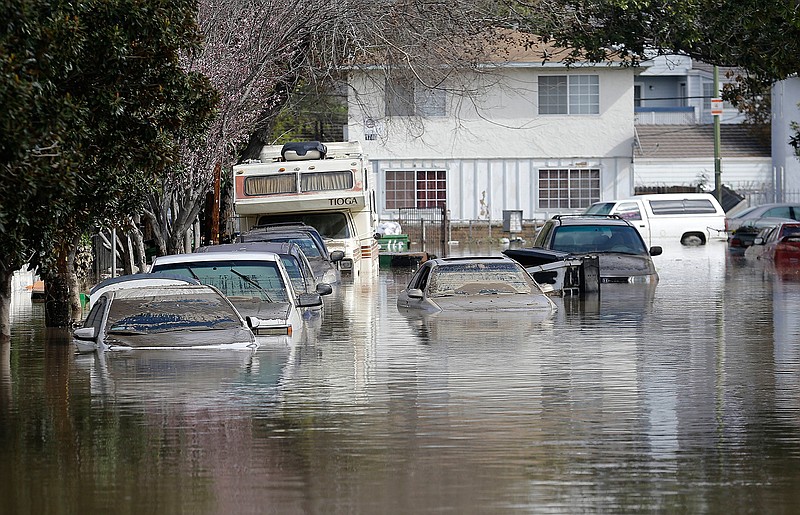SAN JOSE, Calif.-The mayor of San Jose acknowledged that the city failed to properly notify residents to evacuate during a flood emergency early Wednesday when some people said they got their first notice by seeing firefighters in boats in the neighborhood.
City officials ordered more than 14,000 residents to leave their homes as water from swollen Coyote Creek flooded homes and temporarily shut down a portion of a major freeway. Another 22,000 people near the creek were encouraged but not required to evacuate.
"If the first time a resident is aware that they need to get out of their home is when they see a firefighter in a boat, that's a failure," Mayor Sam Liccardo said at a news conference. "We are assessing what happened in that failure."
Liccardo declined to go into detail, saying there would be time for reflection after the emergency was over.
The city began alerting residents of the flood situation on Tuesday via social and mainstream media and sending emergency alerts to those who had signed up for it, said city spokesman Dave Vossbrink.
When water levels changed dramatically overnight, they sent police and firefighters door-to-door during the dramatic overnight evacuation.
"It was scary," said Irma Gonzalez, 59, whose two-story apartment complex is alongside the creek. She was awakened about 2:30 a.m. by police pounding on her door. "They were like, 'You've got to hurry up and go! Move it!" Gonzalez spent the night at her sister's house and said she was thankful for the wakeup call and evacuation. "It's better than to wake up and have water coming in."
Several residents faulted the city for failing to provide proper warnings.
"The city dropped the ball on making sure that people were notified of the potential impact of this flood," said resident Jean-Marie White, whose house and backyard were flooded. "Nobody had any clue."
Another resident, Julie Smalls, said there was no warning from the water authority or the city that the flooding would be so dramatic. Her backyard, which slopes down to the creek, was submerged in about 20 feet of water and eventually flooded her basement, she said.
"Had we been made aware of the severity of what was coming our way, we would have done a whole lot more to get stuff out of our basement," she said.
Bob Benjamin, a meteorologist with the National Weather Service, said the water level in 30-mile long Coyote Creek reached a 100-year high during this week's storm.
The floodwaters were receding Wednesday but the mayor said it would be at least another day before residents would be allowed to return home.
Flood warnings were in place until Saturday because waterways were overtaxed. Another storm was forecast Sunday.
The rains have saturated the once-drought-stricken region and wreaked havoc for residents. At least four people have died as a result of the storms throughout the state in the past week.
Assistant City Manager Dave Sykes said officials first became aware of the rising water late Tuesday when firefighters began evacuating about 400 people from a low-lying residential area.
City officials did not believe the waters would spread to other neighborhoods and did not expand the evacuation orders.
About 300 people stayed in emergency shelters set up by the city, while many found other accommodations.
Coyote Creek flooded after Anderson Dam in Santa Clara County reached capacity during heavy weekend rains.
Managers of the Anderson Dam are taking advantage of a break in the storms to draw down the reservoir, which is supposed to be limited to 68 percent of capacity because of earthquake concerns but is now at 100 percent, said Jim Fiedler, a chief operating officer at the Santa Clara Valley Water District.
He said it could take nine weeks to bring it down to normal levels. Inspectors in 2010 discovered the dam is vulnerable to a major quake and $400 million is being spent to make it earthquake-proof by 2024.

